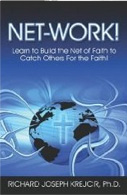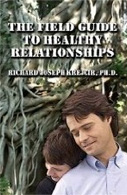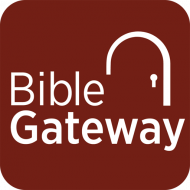"The Women and the Dragon"
General idea: John now sees a most significant event as a women clothed in the brightness of the sun is standing on the moon and wearing a crown of stars; she is pregnant and in the pains of labor. Then, he sees a large, red dragon with seven heads and ten horns, wearing seven crowns. This dragon strikes down one third of the stars and throws them to earth, desiring to devour the baby to whom the woman is giving birth. The woman gives birth to the child who is to lead all nations, and he is taken away by God so the dragon cannot get him. The woman flees to the wilderness where she is cared for by God for a time.
Vs. 1-6: This passage is written in the style of a Greek play depicting the mythology of the Greek gods such as the struggle of Leto giving birth to Apollo and Python and the Egyptian account of their gods Isis and Typhon as she gave birth to Horus. John is using Jewish apocalyptic language. Understanding the literature and metaphors-what the First Century Jew saw-gives us a richer meaning of what the text (God) is seeking to communicate with us today. John uses this captivating style to show the struggle as God gives birth to
· Sign. Usually means something seen in the sky or an astronomical event. Here, it is an illustration, conveying an event that is unexpected and astonishing. As with most symbols and metaphors in Scripture, it is an expression with the intention of pointing to something beyond it (Luke
· A woman. refers to righteousness and motherhood (as
· Clothed. Referring to dignity and exalted
· Sun, with the moon. These are Jewish references to Abraham and Sarah, referring to the birth of the people of
· Twelve stars. This is a symbol of the 12 tribes of
· Pregnant. In contrast, a virgin meant someone who is faithful, and a prostitute meant someone who is pregnant and not married, denoting unfaithfulness. This is meant to contrast the heavenly with the evil, faithful and heavenly Jerusalem versus the harlot and oppressor Babylon, reviled in Israel for its destruction of the Temple, the theft of the Ark, and the captivity of the people (Is. 7:14; 9:6; 26:18-19; 54:1; Micah 5:3; John 16:21; Rev. 17:5; 21:2).
· Pain. As in struggle, good versus evil, our will versus God's will, satan's opportunist ways versus God and the righteous people of faith. This can also mean the suffering of waiting for the Messiah to come and/or waiting for the second coming.
· Give birth refers to the birth of the Messiah; it also denotes being saved, either as faithfulness, or being saved by Christ. It also meant for Jews, the captives of
· Red dragon…. The term "dragon" literally means "serpent" or "sea monster" such as the leviathan, and symbolizes monstrous evil (common in Canaanite and Mesopotamian myths), and Heracles and his battle with the hydra. A dragon is also a description of satan who is the enemy of God, who is a terrifying and destructive beast, and who seeks the total devastation of God's people. This image is not meant to terrify us, but show us how he works so we can beware and defend. This was also a metaphor for
· Seven heads. This represents domination, and also refers to astuteness and universal wisdom (Rev. 13:1).
· Ten horns and seven crowns is the image of great power as well as battle and warfare, depicting how satan rises up to battle God, but he is sent to everlasting torment in Rev. 20:10!
· Tail swept a third of the stars is a Jewish metaphor for the power of Heaven fighting on behalf of
· He might devour her child. Satan was unable to prevent Christ's incarnation and redemption, thus, he seeks to manipulate and destroy His followers (Matt. 2:13-18; Luke 4:28-29).
· Gave birth …a son. Referring to deliverance, this metaphor also pointed to Augustus in Greek thought, and to a savior in Judaism and early Christianity. This theme was a great comfort to the early persecuted Church. This, in the early Church, referred to the Messianic enthronement of Jesus Christ, His birth, death, resurrection, and Lordship (John
· A male child. This is a perhaps a recoding of the fulfillment of Micah 5:3: Therefore
· Rule all the nations… Iron scepter. Meaning the coronation of a divine leader who will conquer evil. This doesn't mean oppression or dictatorship; rather, it refers to a caring shepherd, and at the same time, God's strength, authority, and right to rule (Rev. 2:27;
· Child was snatched up to God. May refer to the ascension of Christ. In Greek myths, children were taken and hidden from their enemy until they were old enough, trained to defend themselves, and could go after their oppressors. The image here is that our God protects, and desires us to mature, be trained up, and be ready to defend (Psalm 2:6-9; Is. 9:6-7; Micah 5:3; Acts 1:9; 2:33; Heb. 1:1-3; 12:2).
· Desert/Wilderness means "spiritual refuge," and refers to how the people of God, after the Exodus, wandered for 40 years, their faithfulness and betrayal, and the grace of God. Also, their waiting for their inheritance of the Promised Land. In the
· Taken care of means spiritual protection, as God promises His protection to a persecuted Church (Rev.13:5).
· 1,260 days perhaps refers to the great tribulation of Daniel, but more likely is a metaphor for trials and troubles. This does not mean a literal number but a type of trouble such as persecution (Dan. 9:2-24; Rev. 11:2).
In this passage, we see God, who cares and protects, and satan, who seeks to destroy. We see God, who sends a good King, and satan, who seeks to kill that King so he can be a bad king. This passage is very clear in its Jewish imagery as it is reminiscent of the struggle of satan who refuses to submit before God, who seeks to usurp God's rule and plan, who desires to influence and control the world for evil, and who hates righteousness and all things of God. This is also a picture of the incarnation of our Lord Jesus Christ who comes to earth as a child; satan vehemently seeks to prevent His birth and destroy His redemptive plan and work. The woman is often seen as
In this passage, we also see God, who deeply loves us and has a plan, even against the most heinous evil powers, persecutions, and disruptions of liberty and life. God is in control! As a Christian, we are a deeply and truly loved child of God; we are accepted in Him and we have a plan that is in Him; thus, we have no need or reason to freak, fear, or to stress, for He is in control and is Sovereign. Satan cannot buffet against Him nor can he buffet against us when we are in Christ.
The Preterist view: There are two prevailing views in the veracity of this passage. One sees it as the continual destruction of
The Futurist view: They see this passage as the middle of the Great Tribulation where the antichrist breaks his contact with
The Idealist view: They see this passage as a metaphor and story of the birth of Christ, the slaughter of the babies in
The Historicist view: They see this passage as another interlude to give us insights and information of events that have already taken place or covered prior in Revelation. Many see this as the struggle of the inward status and affairs of the church, its battle of inward corruption and missed opportunities and liberalism or apostate-ism, or becoming more secular and less spiritual. The woman is seen as the vision of the true and righteous Church, its promise, mission, and success. Giving birth is about the political struggles of the Church; the sun and stars are seen as the Romans and other outside influencers. Male child is seen as the children of the Church and the dragon is an image of
The Essential Inductive Questions (for more Inductive questions see Inductive Bible Study):
1. What does this passage say?
2. What does this passage mean?
3. What is God telling me?
4. How am I encouraged and strengthened?
5. Is there sin in my life for which confession and repentance is needed?
6. How can I be changed, so I can learn and grow?
7. What is in the way of these precepts affecting me? What is in the way of my listening to God?
8. How does this apply to me? What will I do about it?
9. What can I model and teach?
10. What does God want me to share with someone?
Additional Questions:
1. How would you react to an unexpected and astonishing astronomical event, such as a huge asteroid headed toward earth?
2. If you were to write a play about the drama of the incarnation of Christ, how would you do it? How do you see God in this passage?
3. What do you think the images in this text are, such as a large red dragon with seven heads and ten horns wearing seven crowns? Why do most Christians prefer to speculate instead of researching to see what these images meant to the original audience and language?
4. Why do you suppose John also uses the style of a Greek play and the mythology of the Greek gods?
5. How and why does understanding the literature and metaphors-what the 1st century Jew saw-gives us a richer meaning of what the text (God) is seeking to communicate with us today? What happens when we refuse to interpret Scripture in the light of its context and word meanings or see that some of these imageries are deeply rooted in Judaism? (Remember, we can disagree, but never divide over these non-essential issues, and always discuss in love and respect.)
6. Why does the Church struggle to stay faithful? What are the things that cloud our seeing His desire to lead His church in His precepts?
7. How can the fact that God deeply loves you and has a plan for everyone in your church help you better run His church His way?
8. How can you better feel and know that God is in control even against the most heinous evil powers, persecutions, and disruptions of liberty and life?
9. How do you see the relevance of this passage to your life? How would you contrast satan's opportunist ways versus God and the righteous people of faith?
10. Jesus said, how often I have longed to gather your children together, as a hen gathers her chicks. What does it mean to your spiritual growth that He is a caring Shepherd, and at the same time He has the strength, authority, and right to rule? He is not a mean oppressor or a dictator; thus, what is Jesus to you? What are you going to do about the fact that He desires for you to mature, be trained up, and be ready to defend yourself? What would your life and church look like if more people were doing this?
11. How can you be better at remaining faithful to our Lord and continue your witness with character in the midst of the stresses of life? What about if things get real bad, such as persecution?
12. Since we are also called to bear Fruit and operate with His light as His witness, how can you better stand against dark forces for a corrupt and conflict-ridden world with all its trappings of contradiction and confusion?
© 2006 R. J. Krejcir Ph.D. Into Thy Word Ministries www.intothyword.org













